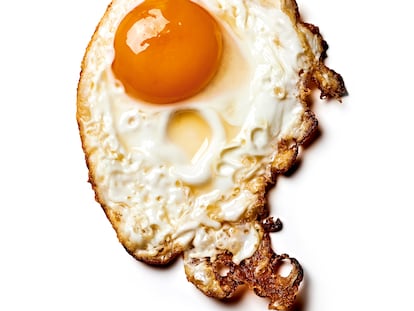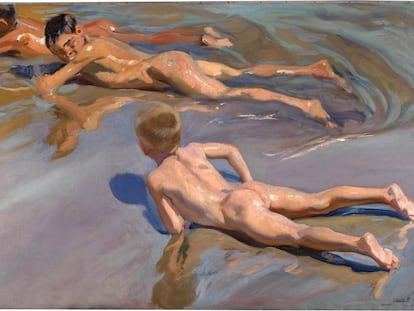From ‘Las Meninas’ to ‘The Three Graces,’ these are the most recreated works of art in history
The paintings of Velázquez, Botticelli and Rubens are some of the most reimagined artworks in Western art
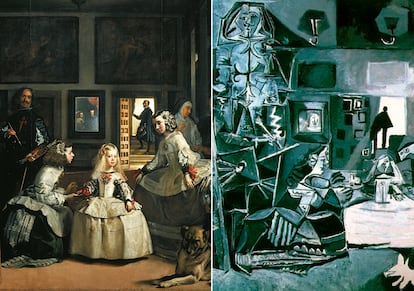
Some works of art are so beautiful and suggestive that they have inspired creators of all origins throughout history to make their own reinterpretations. This need to confront what is most sublime starts in ancient times and affects every artistic experience: painting, sculpture, literature, music, cinema, theater. In the case of painting, there are countless examples of masterpieces that have served as inspiration for new canvases that approach the originals with great honor. Call them reinterpretations, recreations or simply new versions; it is a small group of works that artists turn to again and again.
When it comes to doing lists and rankings of the most influential pieces, everyone knows that there is always something missing — or something superfluous. After all, there is nothing more subjective than the taste for art. That being said, according to the experts consulted, and in view of the recommendations of some major international museums, the most reimagined works throughout history are: Allegory of Spring (1480-1481) by Sandro Botticelli and Venus of Urbino (circa 1538) by Titian (both in the Uffizi Galleries, in Florence); Las Meninas (1656) by Velázquez and The Three Graces (1630-1635) by Rubens (Prado Museum, Madrid); The Luncheon on the Grass (1863) by Édouard Manet (Musée d’Orsay, Paris); Portrait of Innocent X (1650) by Velázquez (Doria Pamphilj Gallery, Rome); and The Cardsharps (1595) by Caravaggio (Kimbell Art Museum, Fort Worth, Texas).

Andrés Úbeda, deputy director of the Prado Museum, thinks that the number of versions that can be made of a masterpiece has to do with the type of creative searches that an artist faces. In the case of Las Meninas, he explains that the spatial solutions and the perspective used by Velázquez have fascinated many creators; for him, the gigantic and revolutionary trompe l’oeil in which Velázquez includes his self-portrait beside the family of Philip IV is truly exceptional.
This three-dimensional canvas has been reinterpreted on numerous occasions. Perhaps too many; some even consider that their image is outright abused. The best-known versions are those made by Dalí, Equipo Crónica and Fernando Botero. However, for the Prado expert, the most important version is the one made by Picasso in 1957. The series, which is part of the permanent collection of Barcelona’s Picasso Museum, consists of 45 interpretations that form a complete and detailed study of Velázquez’ work.
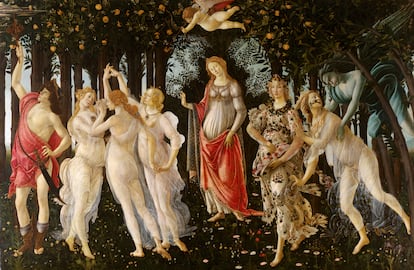
What does a work of art need to become a challenge for the artists who contemplate it? Gloria Moure, art historian, critic and curator, believes that there are several themes that intersect to make a piece subject to reinterpretation throughout history. “First, the artistic value of the work itself, its plastic contributions to history, the topic and its relation with a perception of the world. Artists recreate what they relate to, regarding some of the previous points, creating pieces that are connected to the interests of their own time.”
Changing trends
Simona Pasquinucci, head of the curatorial division of the Uffizi Galleries, in Florence, says that the most replicated works in the Florentine museum are Botticelli’s Allegory of Spring, Titian’s Venus of Urbino, and Madonna della Seggiola and Madonna del Cardellino, both by Raphael. Pasquinucci explains that, together with Professor Cristiano Giometti, she keeps a record of requests for copies of works that have been made throughout history. “Permission could be granted or not, but the request was registered, and there were lots.”
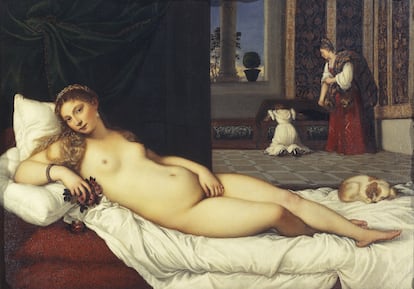
The Italian specialist believes that the more copies or versions, the greater the benefit for the original work. “The interest in one or the other changes with the times and trends. We must always keep in mind the difference between copies made by artists on commission or for study purposes. On the other hand, there are the requests for permission and free interpretations of certain works made as mementos,” she adds. “Among the latter are always Botticelli, Raphael and Michelangelo.”
‘The Three Graces’
Belén Herrera Ottino, director of Opera Gallery Madrid, which specializes in modern and contemporary art, believes that a masterpiece must be very special in order to continue to inspire new versions. “It must have incorporated something absolutely new in its language and broken the molds of the time in which it was painted. It should have revolutionized its time with the way it is expressed and turned the foundations of tradition upside down, laying down a new framework in the perspective of the people. They are works that captivate you with something new every time you look at them, and when you close your eyes, you continue to see them.”
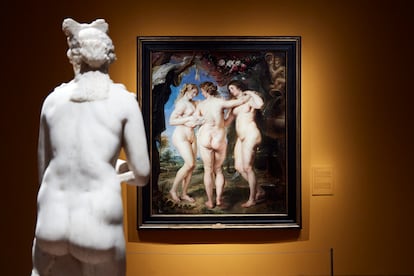
The recent opening of the Opera Gallery in Madrid presented a collection of masters of the 20th century. Among them was one of the most famous and applauded versions of Ruben’s The Three Graces, created by Antonio Saura in 1997. But that was not the first time that Saura dared to confront the mythical abundance of the goddesses Aglaya, Euphrosyne and Thalia: in 1959 he had already made his first creation based on The Three Graces. On display at the Bilbao Fine Arts Museum, the three women are portrayed separately, each one on a different canvas, showing different positions to the viewer.
Will the taste for artistic remakes ever come to an end, or will these creations always be as appealing as the original works? Belén Herrera Ottino believes that it will continue, just as it has happened over the centuries. Going back to the case of The Three Graces, she alludes to a version of Rubens’ canvas made by Niki de Saint Phalle (1930-2002), a radical artist who turned the goddesses into rotund, colorful women that, dressed up in swimsuits, reclaimed multiculturalism in the streets.
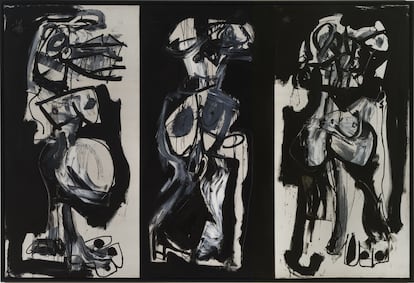
Sign up for our weekly newsletter to get more English-language news coverage from EL PAÍS USA Edition
Tu suscripción se está usando en otro dispositivo
¿Quieres añadir otro usuario a tu suscripción?
Si continúas leyendo en este dispositivo, no se podrá leer en el otro.
FlechaTu suscripción se está usando en otro dispositivo y solo puedes acceder a EL PAÍS desde un dispositivo a la vez.
Si quieres compartir tu cuenta, cambia tu suscripción a la modalidad Premium, así podrás añadir otro usuario. Cada uno accederá con su propia cuenta de email, lo que os permitirá personalizar vuestra experiencia en EL PAÍS.
¿Tienes una suscripción de empresa? Accede aquí para contratar más cuentas.
En el caso de no saber quién está usando tu cuenta, te recomendamos cambiar tu contraseña aquí.
Si decides continuar compartiendo tu cuenta, este mensaje se mostrará en tu dispositivo y en el de la otra persona que está usando tu cuenta de forma indefinida, afectando a tu experiencia de lectura. Puedes consultar aquí los términos y condiciones de la suscripción digital.
More information
Archived In
Últimas noticias
Most viewed
- Sinaloa Cartel war is taking its toll on Los Chapitos
- Oona Chaplin: ‘I told James Cameron that I was living in a treehouse and starting a permaculture project with a friend’
- Reinhard Genzel, Nobel laureate in physics: ‘One-minute videos will never give you the truth’
- Why the price of coffee has skyrocketed: from Brazilian plantations to specialty coffee houses
- Silver prices are going crazy: This is what’s fueling the rally
